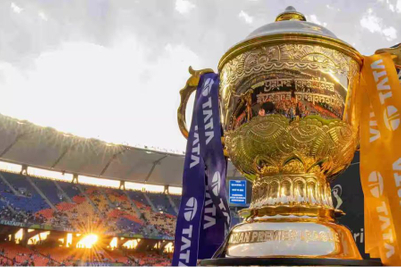
The deal has major implications for the relationship between TV companies and sports rights holders.
A common complaint among TV firms over the past decade has been the escalating cost of sports rights. The prices charged by the top competitions rested on the fact that they offer exclusive rights to their content. But the fact that the IPL’s deal with YouTube will run even in markets where the event already has a TV deal shows that securing television rights may no longer be enough to monopolise coverage.
Peter Harris, CEO of Iris Sponsorship, says that the deal reflects a fragmenting rights market full of new options for rights holders who want to maximise their distribution. “What this shows is that you don’t have to bundle everything up,” he says. “This type of deal gives you broader appeal, which is what sponsors want.”
That said, exploiting these potential new revenues could have an impact on existing income. If TV exposure is no longer the only game in town, the value of those TV rights should begin to go down. That could lead to some interesting negotiations.
Mike Jackson, Asia-Pacific MD at MEC Access, cites an England international football match last year that appeared on a pay-per-view website only after TV broadcasters refused to pay the asking price. He also points to the current situation in Singapore, where the TV firms have been unable to reach a deal for rights to this year’s football World Cup, “If the price-point remains commercially challenging, [online video] could be another option,” he says.
These considerations may be why the relatively new IPL is innovating, in contrast to older properties that have always relied on TV. “It would take Formula One or the Olympics years to do this,” adds Harris.
That said, TV is not dead and buried yet. The value of television versus online will rely on who is being targeted (younger demographics, for example, might gravitate toward online coverage). It will also depend on what platforms like YouTube can offer.
“From the fan’s point of view, the acid test will be the broadcast quality,” says Dan Parr, senior account director at BrandRapport. “Given the choice, I am sure most fans would rather watch the action on a big-screen TV than on a laptop, but for those who have had no access to coverage before, or who are unable to watch the scheduled broadcasts, YouTube enables them to watch the matches at their leisure.”
For online video sites, sport represents a huge opportunity to secure eyeballs and, crucially, advertisers. The trend overlaps with attempts by video-sharing sites to increase the amount of professionally produced content on their platforms. YouTube is one company doing this, but in China, where local sites dominate, Youku and Tudou are also moving in this direction. Such content is far easier to monetise than user-generated videos.
Liu Dele, CFO at Youku, confirms that sport is an emerging area of interest for the site, but until now it has been focusing on library content and sports news given the costs associated with rights to live coverage. “However, we are going to take an aggressive strategy in 2010 given that 2010 is a huge year for sports in the world and in China,” he says.
Finally, the IPL/YouTube deal has implications for advertisers. There are of course huge opportunities for interactive and viral advertising around coverage, allowing event sponsors to do far more than they can around TV coverage.
But there are also dangers. As coverage of sport fragments, it will become harder for official sponsors of events to guard against ambush marketing. Normally, sponsors get first rights to advertising around live coverage; they may find they’re being asked to appear on more channels in future. Rights holders and sponsors will have to work closely together to ensure that the value of their sponsorship deals is maintained.
YouTube's deal with the IPL
> YouTube’s deal will see it broadcast 60 live matches over 45 days in this year’s IPL. The deal covers all world markets except the US and will last for two years. Sponsorship and advertising revenue will be split between the two firms.> When the IPL launched, Dubai-based company netlinkblue bought the online rights for US$50m over 10 years. However, at the time online coverage was only meant to occur in markets without broadcast TV deals.
> In August 2009, netlinkblue’s owner, Live Current Media, sold its IPL contract to Global Cricket Ventures, which then became involved in the YouTube deal.
> Willow TV holds the US web rights.
This week, YouTube celebrated its fifth birthday.
Got a view?
Email [email protected]
This article was originally published in the 11 February 2010 issue of Media.



.jpg&h=334&w=500&q=100&v=20250320&c=1)
.jpg&h=334&w=500&q=100&v=20250320&c=1)
.jpg&h=334&w=500&q=100&v=20250320&c=1)



.jpg&h=334&w=500&q=100&v=20250320&c=1)
.jpg&h=334&w=500&q=100&v=20250320&c=1)




.jpg&h=268&w=401&q=100&v=20250320&c=1)


.png&h=268&w=401&q=100&v=20250320&c=1)
